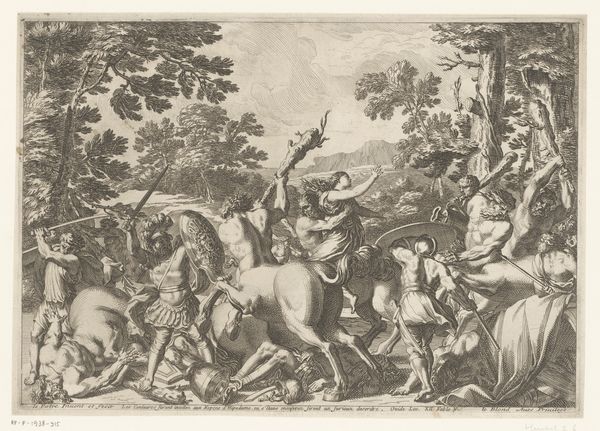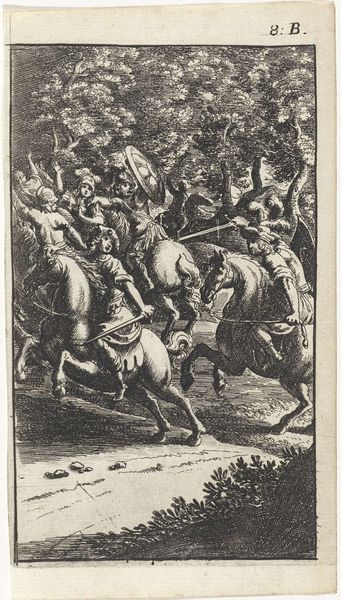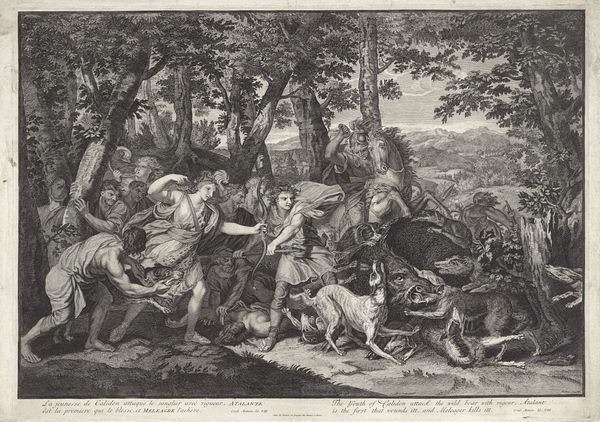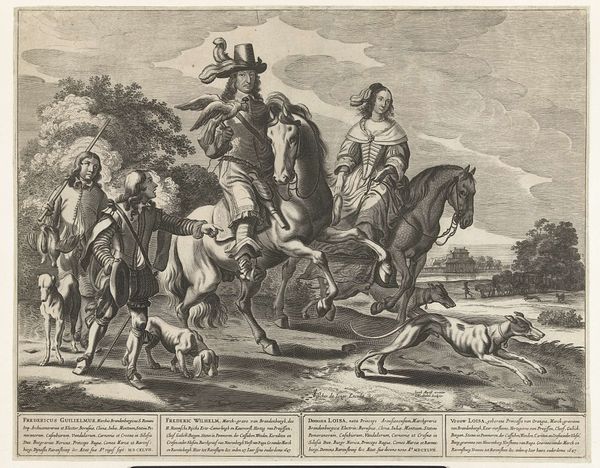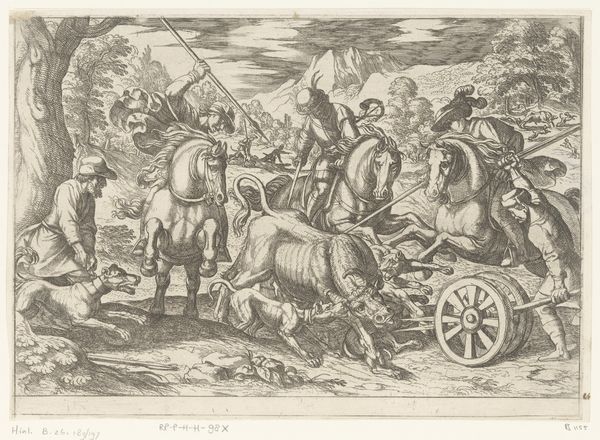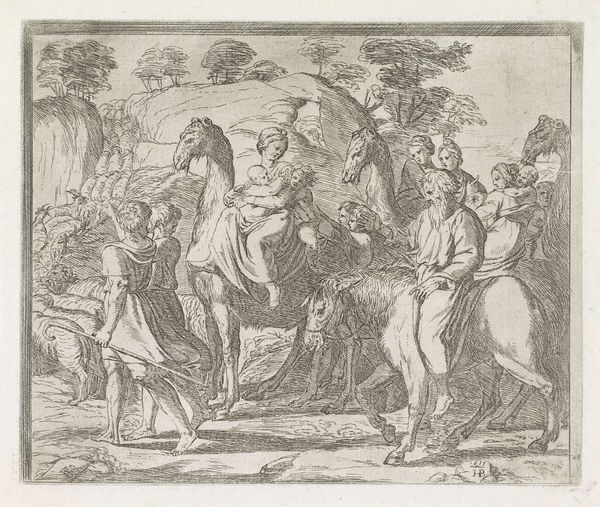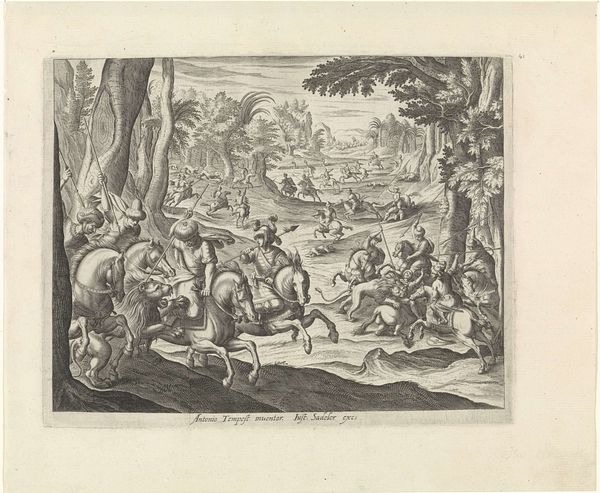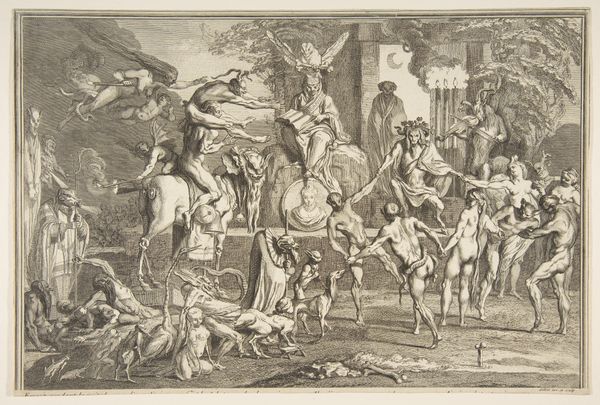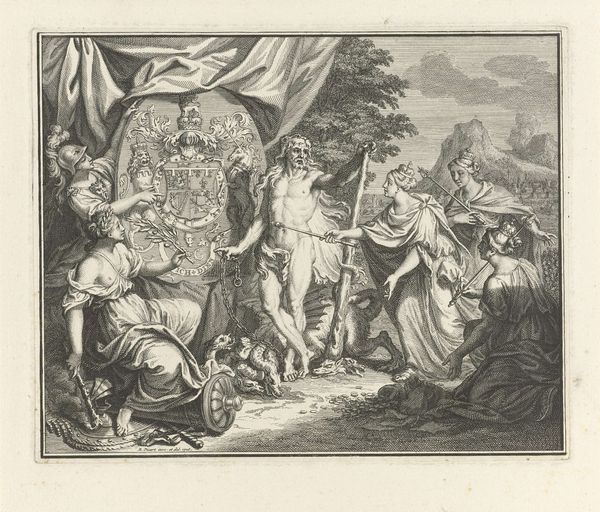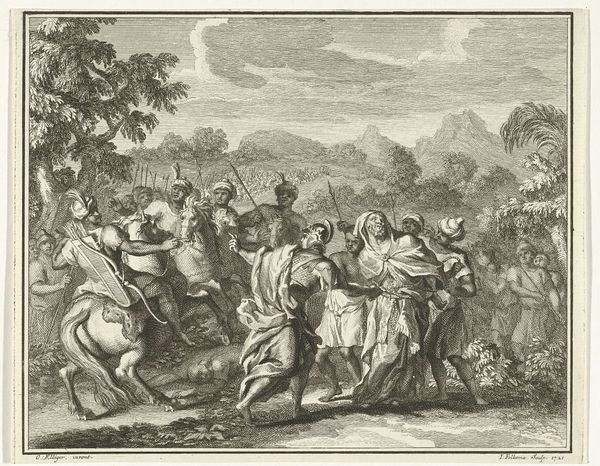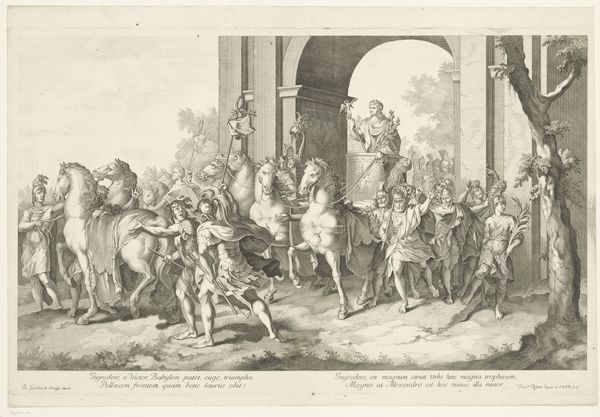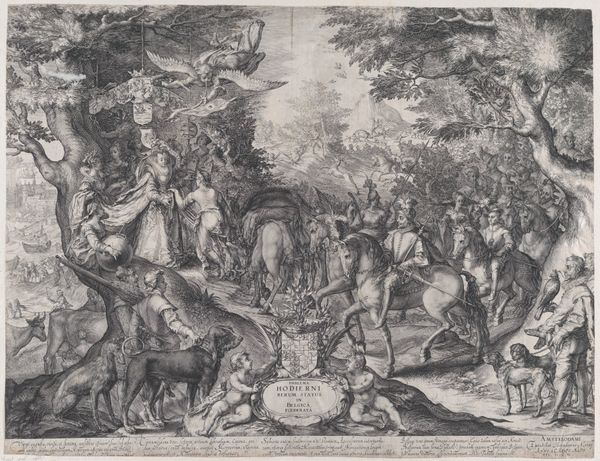
print, engraving
#
baroque
# print
#
landscape
#
figuration
#
history-painting
#
engraving
Dimensions: height 285 mm, width 417 mm
Copyright: Rijks Museum: Open Domain
Curator: This engraving, "The Hunt for the Calydonian Boar," attributed to Jacob Folkema, invites us into a dramatic mythological landscape. It's housed right here at the Rijksmuseum. Editor: Right. It's captivating but rather intense. So many figures packed into one space—it feels like a meticulously staged drama, a bit suffocating, actually. The landscape, though, does offer a degree of depth and tranquility despite the intensity of the composition and of the figures' engagement with it. Curator: Baroque pieces often aim for that effect, evoking heightened emotions through detailed scenes and skillful representation. Knowing the story adds layers, too: a monstrous boar ravages the land, and a group of heroes unite for a formidable hunt. You can almost feel the anxiety etched into each person's face! Editor: And all those meticulously rendered textures! Consider the engraver's craft. Look at how light plays on the skin of those hunting dogs and on the metal armor: it all comes down to labor—the almost unbelievable amount of precise cutting needed to create all this detail, to convey these different surface qualities. I wonder who it was actually made for? A collector? For dissemination of classical stories? Curator: Possibly both! These prints served various purposes. But looking beyond function, imagine Folkema's hand moving across the plate, coaxing light from dark. He isn't merely recording a scene, but really interpreting myth. The slight distortions, the intense gazes—it reflects a Baroque artist seeking to create emotional truth. Editor: Exactly! And the choice of medium? I'd venture it speaks to the broader shifts occurring in visual art towards reproductive technologies, toward creating multiples for easier circulation. Was this to democratize access to grand narratives? Or simply good business to mass-produce art and imagery? We mustn't forget the practical concerns. The cost of copper. The time spent training apprentices. Curator: Perhaps, art always occupies that beautiful crossroads of vision and labor. Whether we interpret it as propaganda, documentation, or simply someone’s impression, the printmaking process preserves history for future gazes and hearts. Editor: Ultimately, recognizing all the labor involved in each piece allows me to look closer at the piece. It shows the beauty of human skill and allows us to consider the society that allowed art to be made in that way. It’s nice when the past can talk back to us like that.
Comments
No comments
Be the first to comment and join the conversation on the ultimate creative platform.
